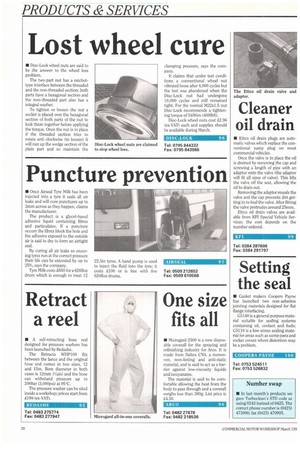Lost wheel cure
Page 104

If you've noticed an error in this article please click here to report it so we can fix it.
II Disc-Lock wheel nuts are said to be the answer to the wheel loss problem.
The two-part nut has a ratchettype interface between the threaded and the non-threaded section; both parts have a hexagonal section and the non-threaded part also has a integral washer.
To tighten or loosen the nut a socket is placed over the hexagonal section of both parts of the nut to lock them together before applying the torque. Once the nut is in place if the threaded section tries to rotate anti clockwise (to loosen) it will run up the wedge section of the plain part and so maintain the clamping pressure, says the company.
It claims that under test conditions a conventional wheel nut vibrated loose after 4,000 cycles but the test was abandoned when the Disc-Lock nut had undergone 10,000 cycles and still remained tight. For the normal M22x1.5 nut Disc-Lock recommends a tightening torque of 540Nm (4001bil).
Disc-Lock wheel nuts cost /2.96 (ex-VAT) each and supplies should be available during March.












































































































